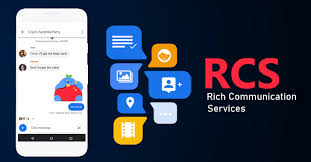Skip to content
Google rolls out chat feature on RCS-based Messages service
November 23, 2020
- • Google has rolled out chat feature in its Messages service based on the open Rich Communication Services (RCS) standard.
- • Chat features upgrade SMS text messaging so that people can send and receive better quality photos and videos, chat over Wi-Fi or data, know when the message is read, share reactions, and enjoy more dynamic and engaging group chats.
- • Messages by Google already lets users starts a video call from the conversation, message from the web, and use helpful features like Smart Reply, while protecting people from spam.
- • “We’re continually improving security protections to safeguard your privacy and will be rolling out end-to-end encryption, starting with one-on-one RCS conversations between people using Messages,” Google said.
- • End-to-end encryption ensures that no one, including Google and third parties, can read the content of your messages as they travel between your phone and the phone of the person you’re messaging, the company added.
-
- •What is Rich Communication Services, or RCS?
- The Rich Communication Services were built by Google to improve native messaging on Android phones drastically, revamping the Messages app to support features that are available on instant messaging apps and Apple’s iMessage. But since these services needed to be built from the scratch, it required the carriers to support such formats that can transfer over their networks.
- All of the things that WhatsApp lets you do form the basis of what RCS is aimed at and the efforts behind it were spearheaded by Google. RCS is backed by a group of telecommunication companies and approved by GSM Association, the group that organizes Mobile World Congress every year.
- • How will end-to-end encryption work?
- Google will soon begin testing E2EE on Messages. In a post, the company has explained how end-to-end encryption will work. This will be meant for one-to-one conversations in Messages. To ensure E2EE, Google is using the Signal protocol.
- • This is because all the data will need the cellular network to reach the other user, in a system that is based on IMS (IP Multimedia Subsystem).This method is similar to how calls work on different networks but as far as messaging was concerned, it was not utilising the potential of cellular networks to the fullest. The full potential encompasses a data exchange system that dedicated apps such as WhatsApp, Telegram, or Facebook Messenger work on for communication.
-








Too bad it isn't available in India for my phone